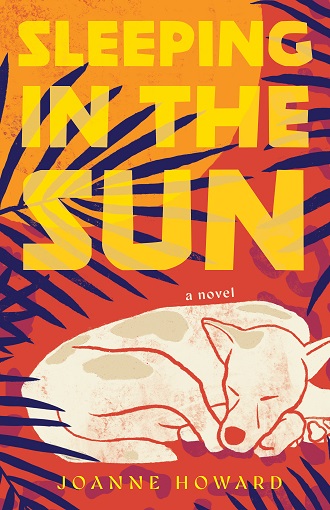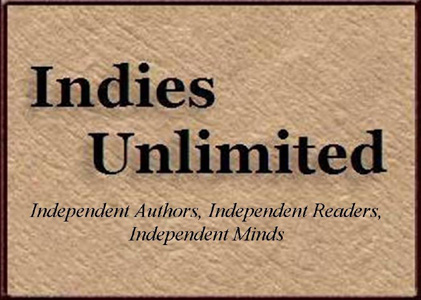This is for fans of historical fiction that are looking for novels not set in western countries. I think readers will find the unique perspective of Americans in British India something they have never read about before.
Joanne Howard – 6 November 2024
The Back Flap
In the last years of the British Raj, an American missionary family stays on in Midnapore, India. Though the Hintons enjoy white privileges, they have never been accepted by British society and instead run a boarding house on the outskirts of town where wayward native Indians come to find relief.
Young Gene Hinton can’t get out from under the thumb of his three older brothers, and the only person he can really relate to is Arthur, his family’s Indian servant. But when Uncle Ellis, a high-ranking British judge, suddenly arrives and announces he’ll be staying indefinitely in their humble house, far from his prestigious post in Himalayan foothills, life as Gene knows it is interrupted. While his brothers are excited at the judge’s arrival, he is skeptical as to why this important man is hiding out with them in the backwaters of Bengal.
Also skeptical is Arthur. Then an Indian woman appears on their doorstep—and, after growing close to her, he learns the sinister truth about the judge. Torn between a family that has provided him shelter, work, and purpose his whole life and the escalating outrage of his countrymen, Arthur must decide where his loyalties lie—and the Hintons must decide if they can still call India home.
About the book
What is the book about?
An American boy comes of age in the last years of the British Raj; little does he know in this turbulent time that his family’s long-standing Indian servant may have ambitions of his own—for better or worse.
When did you start writing the book?
I first put pen to paper in 2016.
How long did it take you to write it?
About 5 years.
Where did you get the idea from?
One Thanksgiving, my family was sharing all these archives about my grandfather’s childhood in India. Some of the stories, like finding a panther in the outhouse or keeping a pet monkey who hated everyone, sounded like they would make a fascinating historical novel. So I figured I’d try to write it.
Were there any parts of the book where you struggled?
Absolutely. It’s my first novel, so I felt a bit of inadequacy just about every step of the way. Specifically though, I initially found a hard time writing Arthur’s character because as an Indian man, he felt very far away from my own lived experience. In the first draft, I simply treated his character as a background actor, but as I carried on writing, I realized that he was a major blank space in the narrative, and that giving myself permission to fully shade him in was only going to make the story stronger.
What came easily?
Descriptions of the natural landscape. I visited India in 2018 and spent some time just journaling what I saw before me. At home in California, I feel very close to nature, so I hope that appreciation and respect for it comes through in this novel, even though it’s a very different environment.
Are your characters entirely fictitious or have you borrowed from real world people you know?
At first they were inspired by my own grandfather and his three brothers, but as any author will tell you, characters take on a life of their own.
We all know how important it is for writers to read. Are there any particular authors that have influenced how you write and, if so, how have they influenced you?
Definitely. For this book specifically, two books especially inspired the character of Arthur, the Hinton family’s Indian servant. The Autobiography of an Unknown Indian by Nirad C. Chaudhuri and Pather Panchali by Bibhutibhushan Bandyopadhyay are two works by Bengali authors that were helpful not only in informing Arthur’s point of view and background but also just filling in the details of the landscape and time period. As for writing style in general, I really love The God of Small Things by Arundhati Roy and A Fine Balance by Rohinton Mistry. Both books capture human suffering in a way that is so poignant and worthwhile.
Do you have a target reader?
This is for fans of historical fiction that are looking for novels not set in western countries. I think readers will find the unique perspective of Americans in British India something they have never read about before. I think a lot of historical fiction is targeted toward women, but I think any gender could relate or connect to this story.
About Writing
Do you have a writing process? If so can you please describe it?
The first scene I ever wrote was like a “test drive” for the characters. I just wanted to put them on the page and see how they would interact. Once I felt like it could actually go somewhere, I drafted a plot outline that was maybe 60% of what the book ultimately became. Then from there, I went chapter by chapter. First I would write very simply what would happen in the chapter from a plot/action perspective. Then I would write it properly, filling in the colors. Once I had all the chapters like that, I probably went through at least six or seven rounds of editing, just trying to get it better and better. I never had a complete rewrite, which I know some authors do, but I did add basically an entire second storyline that dives more into Arthur’s personal life. As I mentioned, he was only a background character in the first iteration, but now he has his own storyline as the second protagonist.
Do you outline? If so, do you do so extensively or just chapter headings and a couple of sentences?
Yes, outlining is important and I do at least a paragraph or so of detail per chapter. However, you can’t be too attached to your outline. The little ideas that just pop into your head out of nowhere are sometimes where the magic happens.
Do you edit as you go or wait until you’ve finished?
I got about halfway through my first draft before I realized I needed to go back and make some substantial edits. In fact, I deleted my original first three chapters on the advice of my professor in my MFA program. He rightly saw that they were just a bit slow and low stakes. I needed to make it clearer why the reader should care and keep reading.
Did you hire a professional editor?
This novel started as my MFA thesis at Pacific University’s Creative Writing Program. I would like to think of my MFA advisors as professional editors in some way; they were very hands-on in the developmental stage. Then I did hire a friend who is a professional editor. And lastly, She Writes Press also provided editing notes. So it’s certainly had a lot of eyes on it.
Do you listen to music while you write? If yes, what gets the fingers tapping?
Yes, usually instrumental music like soundtracks. I like The Lord of the Rings or Bridgerton. These days, I also listen to a lot of K-Pop!
About Publishing
Did you submit your work to Agents?
Yes, I submitted to dozens. I actually had quite a few full and partial requests from interested agents, but they ultimately passed.
What made you decide to go Indie, whether self-publishing or with an indie publisher? Was it a particular event or a gradual process?
Traditional publishing is usually the dream for most authors, but given that I’m a debut author with no existing platform or connection to the publishing world, I knew that I needed to be realistic with my expectations. I gave it a try, but thankfully, there are a lot of different options these days. I had heard about the rise of hybrid publishing during my MFA program, and I had my eye on She Writes Press as it seemed to be the foremost company in the field. They were the first I pitched to, and thankfully, they liked my manuscript.
Did you get your book cover professionally done or did you do it yourself?
She Writes Press offers cover design services. I was blown away by the cover art when I first saw it. I just love the bold colors and the large title, and the dog of course.
Do you have a marketing plan for the book or are you just winging it?
I am working with Books Forward; Simone Jung is my publicist. Thankfully, the She Writes Press authors are a tight-knit group, so they have given me a lot of tips as well. So in that sense, I’m not winging it, but this is all a new experience for me.
Any advice that you would like to give to other newbies considering becoming Indie authors?
I think some new authors can get in their heads about whether or not their work is ready. Yes, polish it as much as you can, but get it out so you can learn from the experience. You can’t have a second book without the first. Indie publishing is exciting to be a part of. There’s a lot more openness for different genres, new authors, or new ideas other than what is sure to be popular.
About You
Where did you grow up?
Born and raised in Sonoma County, California.
Where do you live now?
After leaving for college and my first few jobs, I’ve returned to Sonoma County! I live with my boyfriend, Kyle, and our dog, Cash.
What would you like readers to know about you?
I’m a left-handed vegetarian, Pisces, INFJ, enneagram 4, gardener, hiker, soccer player, and nature fanatic.
What are you working on now?
Something a bit closer to home.
End of Interview:
For more from Joanne Howard, visit her website and follow her on Instagram.
Get your copy of Sleeping in the Sun from Amazon Amazon US.


